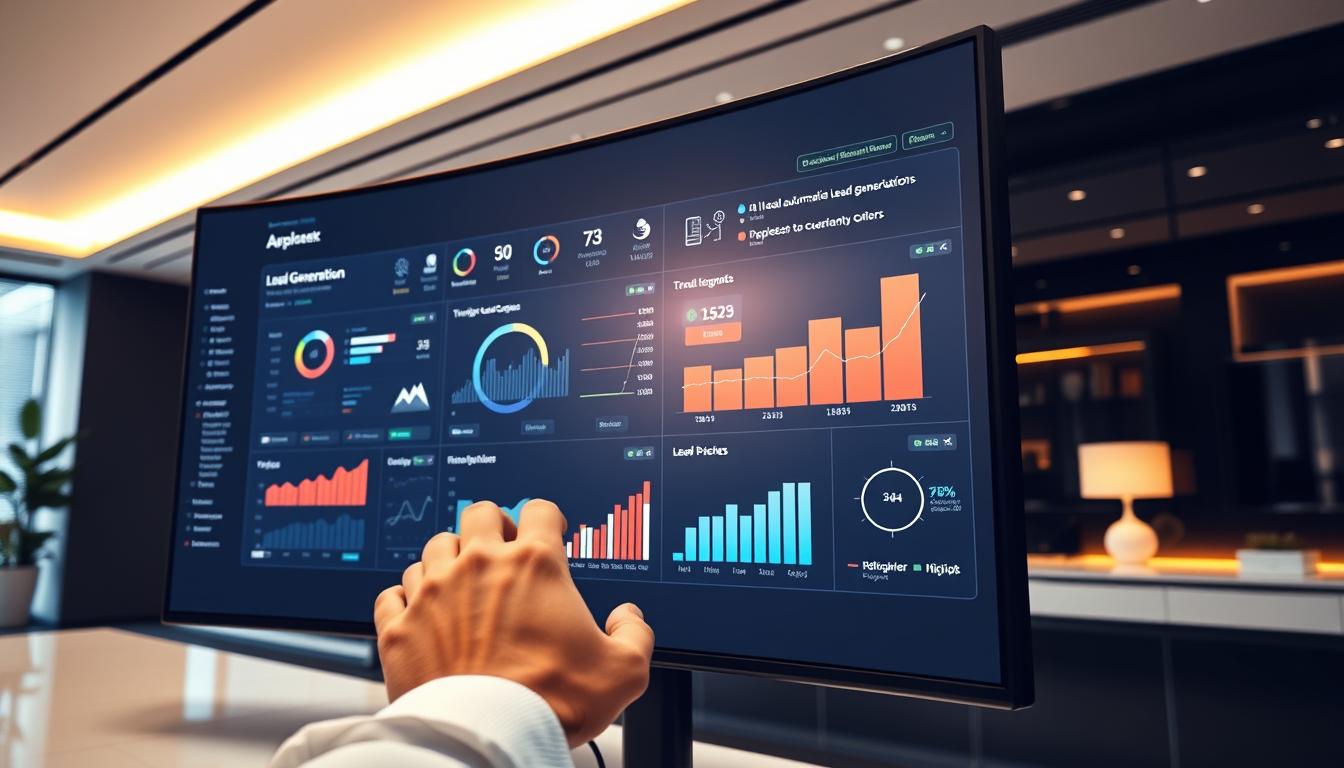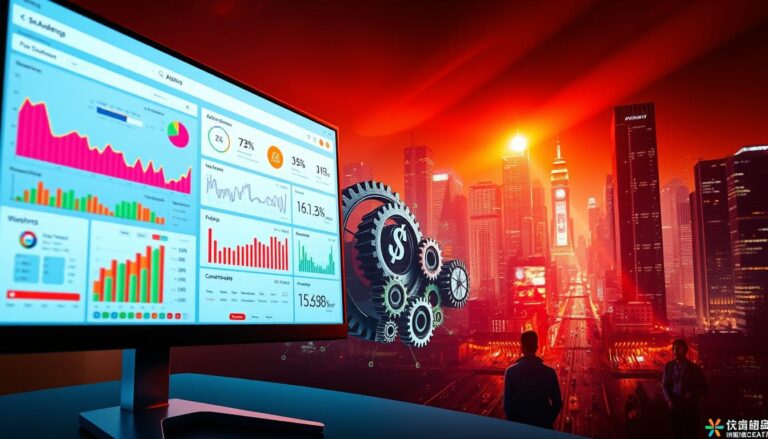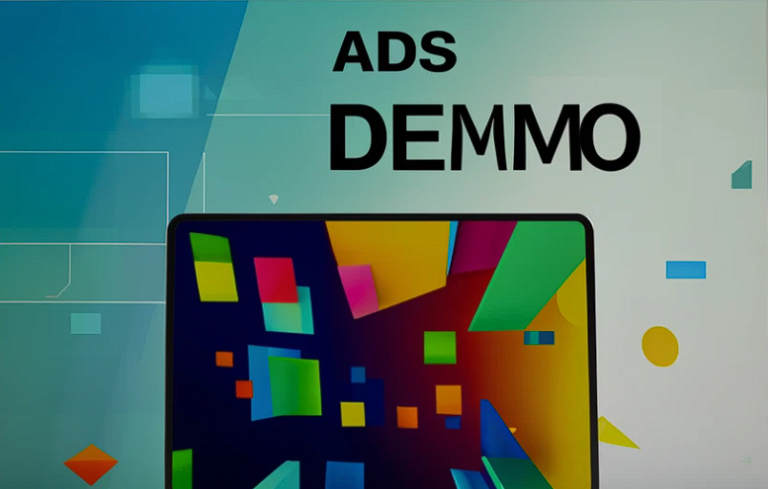Creating a Scalable Lead Generation Engine Using Automation + Ads
In 2025’s hyper-competitive business landscape, creating a scalable lead generation engine has become essential for survival and growth. With 85% of marketers prioritizing lead generation as their top measure and 47.7% of marketing teams facing budget cuts, businesses must build systems that generate 451% more leads through automation while delivering quality over quantity.
Modern lead generation combines advanced AI-powered automation with strategic advertising to create sustainable growth engines. The average cost per lead has reached $198 across industries, making efficiency and scalability critical for success. Leading businesses are shifting from volume-based approaches to high-quality, sales-ready opportunities that align with buyer intent and timing.
This strategic combination doesn’t just increase lead volume—it dramatically improves lead quality, conversion rates, and ROI through intelligent automation, personalized outreach, and data-driven targeting that adapts to evolving market conditions and customer behaviors.
Key Takeaways
- Scalable lead generation is essential for business expansion in 2025’s economic climate.
- AI-powered automation enhances efficiency, generating 451% more qualified leads.
- Strategic ad placement with intent-based targeting maximizes ROI and lead quality.
- Integrated systems adapt to evolving business needs and market conditions.
- Combining automation and ads creates sustainable competitive advantages through superior lead quality.
The 2025 Lead Generation Challenge: Navigating Economic Pressures and Rising Expectations
The modern lead generation landscape has fundamentally transformed, presenting unprecedented challenges that require sophisticated solutions and strategic approaches.
Economic Realities Shaping Lead Generation
With nearly half of marketing teams facing budget cuts, the pressure to generate more qualified leads with fewer resources has intensified. Multi-channel campaigns achieve 31% lower cost-per-lead than single-channel efforts, yet 45% of businesses struggled to generate enough leads in 2024, highlighting the critical need for scalable systems.
Key challenges reshaping the industry include:
- Quality Over Quantity Imperative: 43% of sales reps say their top need from marketing is higher-quality leads, not more volume
- Rising Acquisition Costs: Technology/SaaS companies now pay ~$208 per lead on average, while financial services reach $160+ per lead
- Buyer Sophistication: Modern buyers encounter 4,000-10,000 ads daily, making personalized, value-driven outreach essential
- Attribution Complexity: 68% of companies haven’t identified their sales funnel, creating measurement and optimization challenges
The solution lies in building scalable automation systems that nurture leads effectively while maintaining personalization at scale. Marketing automation now generates revenue of $5.4 billion annually with projected growth exceeding 108%, proving its critical role in modern lead generation success.
Understanding the Components of a Modern Lead Generation Engine
Today’s lead generation engines require sophisticated integration of AI-powered automation, intent-based targeting, and omnichannel strategies to achieve scalable success.
Core Infrastructure Components
The foundation of effective lead generation combines multiple interconnected elements:
- AI-Powered Automation Tools: Streamlining lead capture, scoring, and nurturing with predictive analytics capabilities
- Intent-Based Ad Campaigns: Targeting prospects based on buyer intent signals and behavioral data
- Dynamic Lead Magnets: Personalized content offers that adapt based on visitor behavior and demographics
- Conversion-Optimized Landing Pages: High-performing pages designed for maximum conversion rates
- Customer Data Platforms (CDPs): Integrating information from multiple sources for unified customer profiles
Advanced Integration Strategies
Modern lead generation engines leverage sophisticated integrations:
- CRM and Marketing Automation Sync: Seamless data flow between sales and marketing systems
- Real-time Lead Scoring: AI-driven qualification that identifies sales-ready prospects instantly
- Behavioral Trigger Systems: Automated responses based on specific user actions and engagement patterns
- Cross-Channel Attribution: Complete visibility into which touchpoints drive qualified leads
When these components work in harmony, businesses create powerful lead generation engines that scale efficiently while maintaining high conversion rates and customer satisfaction.
The Revolutionary Power of AI-Enhanced Marketing Automation
AI-powered marketing automation has transformed from a nice-to-have feature into an essential component of competitive lead generation strategies in 2025.
AI-Driven Automation Capabilities
Predictive Lead Scoring uses machine learning to analyze prospect behavior, demographics, and engagement patterns, identifying which leads are most likely to convert. Companies using AI report up to 50% increases in lead generation and 47% higher conversion rates.
Key automation advantages include:
- Intelligent Lead Qualification: AI chatbots qualify leads by asking about company size, job title, and pain points, with 60% of business owners reporting improved conversions
- Personalized Content Delivery: Dynamic content that adapts based on visitor behavior, interests, and stage in the buyer journey
- Automated Follow-up Sequences: Timely, relevant communications that nurture leads without manual intervention
- Real-time Behavioral Triggers: Instant responses to specific actions like email opens, website visits, or content downloads
Advanced Personalization Strategies
Hyper-personalization powered by AI drives significantly higher engagement:
- Dynamic Email Content: 78% of lead nurturing practitioners rank email as the most effective channel, with segmented campaigns driving 30% more opens and 50% higher click rates
- Website Personalization: Real-time adaptation of website content, offers, and messaging based on visitor profiles
- Behavioral Segmentation: Automatic grouping of leads based on actions, enabling targeted messaging strategies
- Predictive Content Recommendations: AI-suggested content that matches prospect interests and buying stage
The evolution from basic automation to AI-enhanced systems enables businesses to deliver human-like personalization at scale, dramatically improving lead quality and conversion rates.
Strategic Ad Campaigns for Quality Lead Generation in 2025
Modern advertising strategies focus on precision targeting, intent-based messaging, and cross-platform orchestration to generate high-quality leads efficiently.
Intent-Based Advertising Excellence
Buyer Intent Data provides insights into where prospects are in their buying cycle, enabling precise targeting of companies and individuals actively researching solutions. This approach significantly improves lead quality and reduces acquisition costs.
Proven targeting strategies include:
- Account-Based Marketing (ABM): Custom landing pages, emails, and ads for each target account addressing specific pain points
- Lookalike Audience Optimization: AI-powered audience creation based on your highest-value customers
- Retargeting with Progressive Messaging: Sequential ads that guide prospects through the buyer journey
- Cross-Platform Remarketing: Consistent messaging across Google, Facebook, LinkedIn, and other platforms
Platform-Specific Lead Generation Strategies
Different platforms require tailored approaches for optimal results:
- LinkedIn Dominance in B2B: 89% of B2B marketers use LinkedIn for lead generation, with 40% naming it the most effective channel for high-quality leads
- Facebook and Instagram ROI: Tied as top social platforms for ROI at ~29% each, particularly effective for B2C lead generation
- Google Ads Precision: Search intent-based targeting with high commercial intent keywords
- Video Advertising Growth: 90% of marketers report video marketing increased lead generation in 2023, up 3% from 2022
Advanced Retargeting and Remarketing
Sophisticated retargeting strategies that move beyond basic remarketing:
- Dynamic Product Remarketing: Showing specific products or services viewed by prospects
- Email Retargeting Integration: Coordinating email sequences with retargeting ads for consistent messaging
- Cross-Device Targeting: Reaching prospects across mobile, desktop, and tablet devices
- Frequency Capping and Creative Rotation: Preventing ad fatigue while maintaining engagement
These strategic advertising approaches, combined with sophisticated automation, create powerful lead generation engines that deliver consistent, high-quality results.
Building Your Scalable Lead Generation Engine: Integration and Execution
Creating a truly scalable lead generation engine requires strategic integration of automation, advertising, and data analytics to achieve sustainable growth and competitive advantages.
System Architecture for Scale
Building for scale requires foundational architecture that supports exponential growth:
- Cloud-Native Infrastructure: Scalable hosting and data management that grows with demand
- API-First Integration: Seamless connectivity between all marketing and sales tools
- Real-time Data Processing: Instant lead scoring, routing, and response capabilities
- Automated Quality Assurance: Built-in validation and error detection systems
Advanced Lead Generation Workflows
Sophisticated automation workflows that maximize efficiency and conversion:
- Multi-Touch Attribution: Tracking all touchpoints that contribute to lead generation and conversion
- Progressive Profiling: Gradually collecting lead information over multiple interactions to reduce form friction
- Lead Lifecycle Management: Automated progression from awareness to sales-ready qualification
- Cross-Channel Orchestration: Coordinated messaging across email, social, advertising, and direct outreach
Revenue Optimization Strategies
Focus on metrics that directly impact business growth:
- Sales-Qualified Lead (SQL) Generation: 80% of leads are marketing-qualified, but only quality SQLs drive revenue
- Pipeline Velocity Optimization: Reducing time from lead generation to closed deal
- Customer Lifetime Value (CLV) Alignment: Targeting prospects with highest potential long-term value
- ROI-Based Budget Allocation: Directing spend toward highest-performing channels and campaigns
The integration of these elements creates a lead generation engine that not only scales efficiently but also continuously improves performance through data-driven optimization and machine learning capabilities.
Measuring Success: Advanced KPIs and Analytics for 2025
Effective lead generation measurement requires sophisticated analytics that go beyond traditional metrics to focus on business impact and predictive insights.
Essential Performance Indicators
Modern lead generation success demands comprehensive measurement across multiple dimensions:
- Lead Quality Metrics: SQL conversion rates, lead scoring accuracy, and sales feedback integration
- Cost Efficiency Analysis: Cost per lead (CPL), cost per acquisition (CPA), and lifetime value to acquisition cost ratios
- Pipeline Velocity Tracking: Time from lead generation to opportunity creation and deal closure
- Attribution Modeling: Multi-touch attribution that accurately credits all contributing touchpoints
Advanced Analytics Implementation
Leveraging AI and machine learning for deeper insights:
- Predictive Lead Scoring: AI models that identify high-conversion probability leads in real-time
- Behavioral Pattern Analysis: Understanding which actions indicate buying intent and readiness
- Channel Performance Optimization: Real-time budget reallocation based on performance data
- Cohort Analysis: Tracking lead quality and conversion patterns over time
Business Impact Measurement
Connecting lead generation activities to business outcomes:
- Revenue Attribution: Direct connection between lead generation activities and closed revenue
- Customer Acquisition Cost (CAC) Payback: Time to recover acquisition investment through customer revenue
- Market Share Growth: Lead generation’s contribution to competitive positioning
- Brand Awareness Impact: How lead generation activities influence overall brand recognition
Regular analysis of these metrics enables continuous optimization and strategic decision-making that drives sustainable growth and competitive advantages.
Advanced Optimization and Troubleshooting Strategies
Maintaining peak performance in lead generation engines requires proactive optimization, systematic troubleshooting, and continuous adaptation to market changes.
Data-Driven Optimization Approaches
Sophisticated optimization strategies that maximize performance:
- A/B Testing at Scale: Continuous testing of headlines, offers, landing pages, and email sequences
- Multivariate Analysis: Testing multiple variables simultaneously to identify optimal combinations
- Conversion Rate Optimization (CRO): Systematic improvement of landing page and form performance
- Funnel Analysis: Identifying and resolving bottlenecks in the lead generation process
Common Performance Issues and Solutions
Addressing typical challenges that impact lead generation effectiveness:
- Lead Quality Problems: Implement advanced lead scoring, improve targeting parameters, and enhance qualification processes
- Conversion Rate Decline: Optimize landing page design, test new offers, and improve follow-up sequences
- High Cost Per Lead: Refine audience targeting, improve ad relevance, and optimize bidding strategies
- Poor Lead-to-Customer Conversion: Enhance lead nurturing, improve sales handoff processes, and align marketing-sales messaging
Future-Proofing Your Lead Generation Engine
Preparing for evolving market conditions and technological advances:
- Privacy-First Strategies: Building systems that comply with evolving data protection regulations
- Voice and Conversational AI: Integrating emerging technologies for enhanced customer engagement
- Predictive Analytics: Using AI to anticipate market changes and adjust strategies proactively
- Omnichannel Integration: Creating seamless experiences across all customer touchpoints
By implementing these advanced optimization strategies, businesses can maintain competitive advantages while adapting to changing market conditions and customer expectations.
Conclusion: Your Path to Scalable Lead Generation Success
Building a scalable lead generation engine in 2025 requires strategic integration of AI-powered automation, intent-based advertising, and sophisticated analytics. With 85% of marketers prioritizing lead generation and automation helping generate 451% more qualified leads, the businesses that master these systems will dominate their markets.
The future belongs to organizations that combine technological sophistication with human insight, creating lead generation engines that not only scale efficiently but also deliver personalized experiences that build trust and drive conversions. Success demands continuous optimization, data-driven decision-making, and the agility to adapt to evolving customer expectations.
Key success factors for 2025 lead generation include:
- Implementing AI-powered automation that enhances rather than replaces human relationships
- Creating intent-based advertising strategies that reach prospects at the optimal moment
- Building scalable systems that maintain quality while growing volume
- Developing comprehensive measurement frameworks that connect activities to business outcomes
As the lead generation landscape continues evolving, the organizations that invest in sophisticated, scalable systems today will capture the greatest share of tomorrow’s opportunities, building sustainable competitive advantages that drive long-term growth and market leadership.
FAQ
How much can businesses expect to improve lead generation with automation in 2025?
Marketing automation helps businesses generate 451% more qualified leads according to recent studies. Companies using AI report up to 50% increases in lead generation and 47% higher conversion rates, making automation essential for competitive advantage.
What are the average costs for lead generation across different industries in 2025?
Lead generation costs vary significantly by industry: Technology/SaaS averages ~$208 per lead, financial services $160+, healthcare ~$162, and retail/eCommerce often under $50. Multi-channel campaigns achieve 31% lower cost-per-lead than single-channel efforts.
Which advertising platforms provide the best ROI for lead generation?
LinkedIn dominates B2B with 89% of marketers using it for lead generation and 40% naming it most effective for quality leads. Facebook and Instagram tie for overall ROI at ~29% each, while video marketing shows 90% effectiveness for lead generation.
How important is lead quality versus quantity in modern B2B marketing?
Lead quality is paramount—43% of sales reps say their top need from marketing is higher-quality leads, not volume. While 80% of leads are marketing-qualified, only sales-qualified leads (SQLs) drive actual revenue, making quality prioritization essential.
What role does AI play in modern lead generation strategies?
AI enables predictive lead scoring, automated personalization, intelligent chatbots, and behavioral trigger systems. It helps identify high-conversion probability leads, creates personalized content at scale, and automates complex nurturing sequences for maximum efficiency.
How can businesses measure the success of their lead generation efforts?
Focus on SQL conversion rates, cost per acquisition, pipeline velocity, and multi-touch attribution. Advanced metrics include predictive lead scoring accuracy, customer lifetime value ratios, and direct revenue attribution from lead generation activities.
What are the biggest challenges facing lead generation in 2025?
Major challenges include 47.7% of marketing teams facing budget cuts, rising acquisition costs, buyer sophistication requiring personalized outreach, and 68% of companies not identifying their sales funnels, creating measurement difficulties.
How can small businesses compete with enterprise-level lead generation?
Small businesses can leverage cloud-native automation tools, AI-powered personalization, and intent-based targeting to compete effectively. Focus on niche markets, build authentic relationships, and use data-driven optimization to maximize limited budgets.






